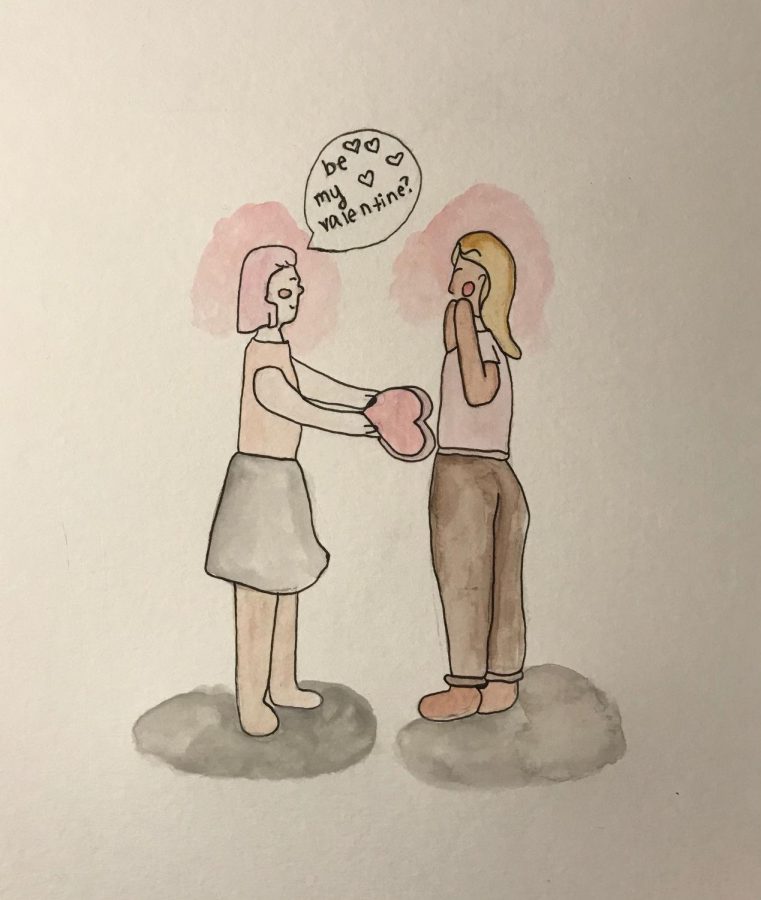The History of Valentine’s Day
February 12, 2021
Every year when Valentine’s Day arrives, people often don’t think about the history of the holiday. To many, it is simply another date of the year and nothing special. However, the history of Valentine’s Day is something that should be shared, as it can offer key insights to the origins of many beloved holidays.
The story of Valentine’s Day begins in the third century with the Pagan holiday Lupercalia. The ancient festival which welcomed the start of spring took place from February thirteenth through the fifteenth. The holiday was celebrated through sacrifices and worshipping the Roman god of fertility, Lupercus. Men and women were coupled off by pulling names from a jar and would often marry soon after.
Soon, Christianity slowly became the dominant religion of Europe, and, with that, Paganism began to die out due to the often forced conversion of pagans. However, many newly converted Christians wanted to carry their traditions on with them; that’s where many modern holidays take root.
One of such holidays is Halloween, which was originally called Samhain, which has many things in common with the modern counterpart. Two obvious examples are jack-o-lanterns (which were originally carved with turnips instead of pumpkins) and dressing up in costumes.
Another example of this is Christmas which aesthetically, and in relation to its time of year, has much in common with Yule. Some traditions from Yule that carried over to Christmas are decorating trees, caroling, and gift giving.
Similar to Yule and Samhain, Lupercalia lasted after the conversion but was outlawed due to it being “un-Christian.” The holiday was renamed Valentine’s Day in the fifth century by Pope Gelasius.
There were many Christain martyrs named Valentine, but it is common belief that the holiday was named after Valentine of Terni. After being jailed for marrying people in secret, Valentine befriended the daughter of his jailor. He wrote letters to her ending them with “from your Valentine,” which can be credited as the origin of both Valentine’s Day cards and naming someone as their valentine.
Speaking of which, cards were often written and decorated for one’s significant other as far back as the 1500s, and, starting in the 1840s, valentines were produced commercially. Historically, valentines would display images of the Roman god Cupid, who was the god of love and birds. It was commonly believed back then that Valentine’s Day was the beginning of birds’ mating season.
Traditional gifts were pretty similar to the ones gifted today. The most common gifts were Candies, flowers and red roses, as they symbolize love and beauty. Interestingly, red roses were the symbol of Aphrodite; a myth stated that she ran through a field of white roses to find her dying lover. As she ran, her blood turned the white roses red, thus resulting in the symbol of red roses. Another classic Valentine’s Day gift, a heart shaped box of chocolates, was first recorded in 1861.
Today, Valentine’s Day is celebrated throughout North America, Australia, Brittain, France, Argentina, South Korea and many other countries. Modern Valentine’s Day traditions include decorating boxes and exchanging cards, candies, and other treats. According to Hallmark, 145 million cards are exchanged each year. More than 8 billion Conversation Hearts, a Valentine’s staple, are produced each year. Many traditions from the past are still celebrated today.
However, it has now become a polarizing holiday, with some loving it and others hating it, as they believe it puts too much pressure on people to find a relationship. Despite all controversy, Valentine’s Day has surpassed its traditional meaning and now encompasses all forms of love, including platonic, familial, and, of course, romantic love.






























